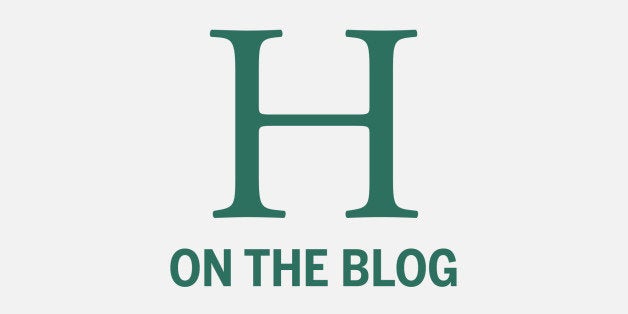
The September 11 Memorial Museum's disregard of the advice of its Interfaith Advisory Council regarding a film in its permanent exhibition has made national and international headlines in the last two weeks, yet few reporters have asked the crucial underlying question: What official guidelines set the mission of the museum, a private nonprofit corporation that operates from government land? This line of investigation, leading back to a 2004 advisory committee of the Lower Manhattan Development Corporation (LMDC), provides the basis to understand how The Rise of Al-Qaeda film emerged as it did. A focus on the institution's fundamental requirements also offers a possible solution to this unfortunate impasse with the museum's advisors.
The Lower Manhattan Development Corporation was a hybrid City-State entity created in November 2001 to support the rebuilding of Lower Manhattan and to determine the distribution of federal funding after September 11. Among its tasks was to set the design for the World Trade Center Memorial, and in January 2004 it concluded an open contest by selecting Michael Arad and Peter Walker's proposal named "Reflecting Absence."
After the selection of the memorial design, in April 2004 the LMDC established a "Memorial Center Advisory Committee" to outline the responsibilities of an accompanying informational "Memorial Center." The committee tasked a broad selection of individuals -- "victims' family members, residents, survivors, first responders, historians, preservationists, and curators" -- to recommend exhibits in the "Memorial Center" that would provide the most appropriate context. A good number of the 35 members of this panel had great knowledge of New York history and appreciated the specific function of memorials. These figures included Robert Kuhn (NY Historic Preservation Office), Mark Schaming (NYS Museum), Ken Jackson (Columbia University, formerly of the New York Historical Society), Tom Eccles (Public Art Fund), Andrew Dolkart (Historic Preservation, Columbia University), Richard J. Schwartz (NYS Council on the Arts) and Sharon Dunn (NYC Department of Education).
This group produced a set of draft recommendations made available for public comment in June 2004, and the final recommendations were released in August 2004. This list became a "formal planning document" for the "Memorial Center" whose implementation was soon assigned to the "World Trade Center Memorial Foundation," a nonprofit corporation with a board of directors that overlapped substantially with the LMDC.
In the July 2004 LMDC review of the public comments, one issue stands out. One of the largest categories of comments, many sent by families of 9/11 victims, wanted the "Memorial Center" to exclude any information on the hijackers. Indeed, more total public comments opposed the inclusion of an exhibit dedicated to "the terrorists" than those supporting it, although the committee declined to delete this draft recommendation. One of the smallest areas of support, with only six comments out of 1,070, was the demand for a section providing "context and background for the attacks." Indeed, three times as many comments asked for "exhibits that promote peace and inter-cultural understanding."
The reasons to oppose a section dedicated to "the terrorists" were likely varied, with some feeling that highlighting them would justify their actions and offer a highly visible reward, while others might have argued that this "Memorial Center" would not yet have the necessary distance in time to process and present such a history. Regardless of the reasoning of the comments, the Advisory Committee, while not excluding all mention of the hijackers, did maintain language in its guidelines that would discourage the "Memorial Center" from exploring their motivations or ideology.
Instead, the committee declared that the primary task of "Memorial Center" would be to create "an exhibition focused on the events of September 11, 2001, which should incorporate the individual stories and perspectives of victims, survivors, responders, area residents and witnesses." Only, secondarily, among a list of ten "supplemental exhibits," did the committee include a guideline to offer "a factual presentation of what is known of the terrorists, including their methods and means of preparation." This language seems fairly clear. The LMDC panel wanted the "Memorial Center" to focus on clear facts, especially the known details of how this specific attack was prepared and the methods that were used. No language in the LMDC recommendations recommends a presentation on the ideology of the hijackers or on the history of al-Qaeda (and, certainly, of so-called "Islamist extremism" or "Islamic terrorism"). Questions of ideology, highly contested by scholars and based on subjective assessments of motivation, appear inherently "non-factual."
Then how did the current scandal over The Rise of al-Qaeda emerge? The New York Times provided the missing link in a June 2012 article where Patricia Cohen revealed the politics of how the "Memorial Center" plans were expanded into a full-fledged "September 11 Memorial Museum." The foundation was even renamed to the "National September 11 Memorial and Museum at the World Trade Center Foundation, Inc." During the planning of the museum's exhibits, the foundation had felt constrained by this single line ("a factual presentation of what is known of the terrorists, including their methods and means of preparation"). Although the LMDC guidelines were apparently treated like "a sacred text," the foundation initiated a "Talmudic-like analysis" of this one phrase to expand its scope. Rather than curtail the exhibition to a presentation of the clear "facts" surrounding the attack, the museum determined that it should provide a history of al-Qaeda, including a generalization of its ideology developed internally by education director Clifford Chanin (a process he recently elaborated on FOX News).
We now know that this internal determination of their mission led the museum to include a short film, narrated by NBC anchor Brian Williams, to summarize al-Qaeda's history and ideology. This stretching of the LMDC guidelines explains a crucial oversight that has bedeviled observers in the last several weeks, especially scholars: given the importance and controversial nature of these issues, why did the September 11 Memorial Museum not organize a broad-based committee of leading scholars to advise its materials on history and ideology? It seems likely that, because the museum was aware that it was bypassing a core guideline (and was also pressured by certain ideologically-driven constituencies, as Cohen detailed in her article), it had to implement this component in a quiet way, with modest scholarly vetting by a small, select group. The museum has refused outside requests to list its academic advisors, and they are nowhere to be found on its website.
A truly broad-based academic committee would have inevitably decided that such a controversial exhibition on the ideology and history of al-Qaeda could not rely on rough labels masquerading as "facts," and would require more historical context than disputed shortcut terms like "Islamism" and "jihadism" would allow. But that approach, which would have required an even larger exhibit discussing the modern history of the Middle East, would have made the deviation from the LMDC guidelines even more apparent.
Unfortunately, the museum's half-way solution has only led to more problems. The screening of the film at a June 2013 advisory gathering evoked commentary that "references in the film to Islam and Muslims may be interpreted negatively, particularly by Muslim visitors." The museum then resolved to "review the film with the organization's Interfaith Advisory Group," yet when this group saw the film several months later in December 2013 they were shocked, thinking "wow, you guys have got to be kidding me."
Although much of the media coverage does not reference their specific letter to the museum, the Interfaith Advisory Group's concern with the film was not that "the terrorists" were identified as Muslims or that they were labeled with the terms "Islamist" or "jihadism" per se, but that, in this quite short film, sufficient context and definition were simply not offered. The advisory group argued that the film in its current state presented risks that visitors would assign collective responsibility for September 11 to Islam and to all Muslims.
The issue remains at an impasse. The museum's leadership and spokespersons have rejected all media and civil rights organization requests to view the film before the museum's opening on May 21, repeating talking points stating the film is "factually-based" (implicitly referencing the LMDC guidelines) and that their own Interfaith Advisory Group is spreading inaccuracies.
A recommitment to the original LMDC guidelines under some sort of governmental supervision offers a basis to escape this controversy. Even though the current memorial foundation was established through a state-city partnership under the LMDC, both New York City and New York State have refused to support the museum's expansive $63-million-dollar operating budget. The memorial foundation has therefore deployed a D.C. lobbyist to try to obtain federal money, and foundation president Joe Daniels has admitted to spending much of his time trying to secure an extra $20 million dollars in annual funds from federal taxpayers.
This fundraising focus is quite remarkable given that in the past two weeks the foundation, which has already received $329 million in federal grants from the Department of Housing and Urban Development, has refused the anxious requests of Arab-American, Muslim, Sikh, and South Asian civil rights organizations to view the film. Do Arab-Americans and Muslim-Americans not pay federal taxes? At this point, especially as the institution continues to demand governmental support, only increased federal or state-city control could end this controversy and ensure that the institution abides by its chartered mission in a publically-responsive manner.
The September 11 Memorial should offer a solemn experience for the victims' families and others who still feel the pain of that day, yet the memorial foundation has carelessly politicized its overly-ambitious museum and decided to charge $24 per person to enter a building that contains a tomb of unidentified human remains. It is not clear if this organization, or any conceivable entity for that matter, is yet in position to offer a definitive narrative of the history of al-Qaeda and of the modern Middle East that seeded it. The curators and staff of the museum are admirable and dedicated, but some of the leadership is operating in an unaccountable and closed manner. Let the federal, city, or state governments, with the advice of all of the victims' families, take over the memorial site and let its mission be grounded in some kind of open and responsive public process. At the very least, restricting the private museum's mission to the plain meaning of the original LMDC guidelines could solve this controversy over the film.
